Potřebujeme váš souhlas k využití jednotlivých dat, aby se vám mimo jiné mohly ukazovat informace týkající se vašich zájmů. Souhlas udělíte kliknutím na tlačítko „OK“.
ASTM C993-97(2012)
Standard Guide for In-Plant Performance Evaluation of Automatic Pedestrian SNM Monitors (Withdrawn 2021)
Automaticky přeložený název:
Standardní příručka pro In-Plant hodnocení výkonu Automatické Pěší SNM Monitory
NORMA vydána dne 1.1.2012
Informace o normě:
Označení normy: ASTM C993-97(2012)
Poznámka: NEPLATNÁ
Datum vydání normy: 1.1.2012
Kód zboží: NS-16011
Počet stran: 7
Přibližná hmotnost: 21 g (0.05 liber)
Země: Americká technická norma
Kategorie: Technické normy ASTM
Kategorie - podobné normy:
Anotace textu normy ASTM C993-97(2012) :
Keywords:
gamma radiation, material control and accountability, neutron radiation, nuclear materials management, radiation detectors, radiation monitors, safeguards, security, Field testing, In-plant performance, Monitoring--nuclear applications, Nuclear fuels (reactor), Performance--nuclear materials/applications, Plutonium, Routine-operational evaluation, SNM (special nuclear materials), Theft, Uranium, ICS Number Code 93.080.30 (Road equipment and installations)
Doplňující informace
| Significance and Use | ||||||||||||
|
SNM monitors are an effective and unobtrusive means to search pedestrians for concealed SNM. Facility security plans use SNM monitors as one means to prevent theft or unauthorized removal of designated quantities of SNM from access areas. Daily testing of the monitors with radioactive sources guarantees only the continuity of alarm circuits. The in-plant evaluation is a way to estimate whether an acceptable level of performance for detecting chosen quantities of SNM is obtained from a monitor in routine service or after repair or calibration. The evaluation verifies acceptable performance or discloses faults in hardware or calibration. The evaluation uses test sources shielded only by normal source filters and encapsulation and, perhaps, by intervening portions of the transporting individual's body. The transporting individual also provides another form of shielding when the body intercepts environmental radiation that would otherwise reach the monitor's detectors. Hence, transporting individuals play an important role in the evaluation by reproducing an important condition of routine operation. The evaluation, when applied as a routine-operational evaluation, provides evidence for continued compliance with the performance goals of security plans or regulatory guidance. It is the responsibility of the users of this evaluation to coordinate its application with the appropriate regulatory authority so that mutually agreeable evaluation frequency, test sources, way of transporting the test source, number of test-source passages, and nuisance-alarm-rate goals are used. Agreed written procedures should be used to document the coordination. |
||||||||||||
| 1. Scope | ||||||||||||
|
1.1 This guide is affiliated with Guide C1112 on applying special nuclear material (SNM) monitors, Guide C1169 on laboratory performance evaluation, Guide C1189 on calibrating pedestrian SNM monitors, and Guides C1236 and C1237 on in-plant evaluation. This guide to in-plant performance evaluation is a comparatively rapid way to verify whether a pedestrian SNM monitor performs as expected for detecting SNM or SNM-like test sources. 1.1.1 In-plant performance evaluation should not be confused with the simple daily functional test recommended in Guide C1112. In-plant performance evaluation takes place less often than daily tests, usually at intervals ranging from weekly to once every three months. In-plant evaluations are also more extensive than daily tests and may examine both a monitor's nuisance alarm record and its detection sensitivity for a particular SNM or alternative test source. 1.1.2 In-plant performance evaluation also should not be confused with laboratory performance evaluation. In-plant evaluation is comparatively rapid, takes place in the monitor's routine operating environment, and its results are limited to verifying that a monitor is operating as expected, or to disclosing that it is not and needs repair or recalibration. 1.2 In-plant evaluation is one part of a program to keep SNM monitors in proper operating condition. Every monitor in a facility is evaluated. There are two applications of the in-plant evaluation: one used during routine operation and another used after calibration. 1.2.1 Routine Operational Evaluation—In this form of the evaluation, nuisance alarm records for each monitor are examined, and each monitor's detection sensitivity is estimated during routine operation. The routine operational evaluation is intended to reassure the plant operator, and his regulatory agency, that the monitor is performing as expected during routine operation. This evaluation takes place without pre-testing, recalibration, or other activity that might change the monitor's operation, and the evaluation simulates the normal use of the monitor. 1.2.2 Post-Calibration Evaluation—This form of the evaluation is part of a maintenance procedure; it should always follow scheduled monitor recalibration, or recalibration connected with repair or relocation of the monitor, to verify that an expected detection sensitivity is achieved. Nuisance alarm data do not apply in this case because the monitor has just been recalibrated. Also, having just been calibrated, the monitor is likely to be operating at its best, which may be somewhat better than its routine operation. 1.3 The values stated in SI units are to be regarded as standard. 1.4 This standard does not purport to address the safety problems, if any, associated with its use. It is the responsibility of the user of this standard to establish appropriate safety and health practices and determine the applicability of regulatory limitations prior to use. |
||||||||||||
| 2. Referenced Documents | ||||||||||||
|
Podobné normy:
Historická
1.6.2011
Historická
1.12.2010
Historická
1.12.2010
Historická
1.12.2010
Historická
1.12.2010
Historická
1.11.2012
Doporučujeme:
Aktualizace zákonů
Chcete mít jistotu o platnosti užívaných předpisů?
Nabízíme Vám řešení, abyste mohli používat stále platné (aktuální) legislativní předpisy.
Chcete vědět více informací? Podívejte se na tuto stránku.


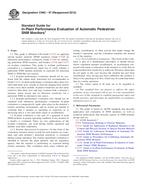
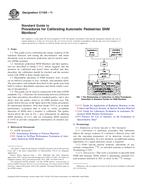 ASTM C1189-11
ASTM C1189-11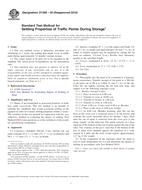 ASTM D1309-93(2010)..
ASTM D1309-93(2010)..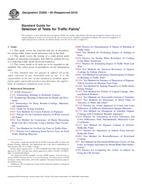 ASTM D2205-85(2010)..
ASTM D2205-85(2010)..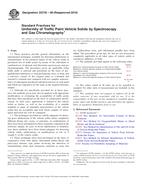 ASTM D2743-68(2010)..
ASTM D2743-68(2010)..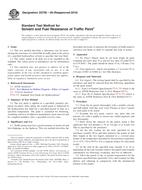 ASTM D2792-69(2010)..
ASTM D2792-69(2010)..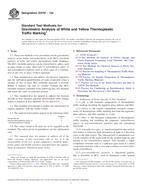 ASTM D4797-12a
ASTM D4797-12a
 Cookies
Cookies
